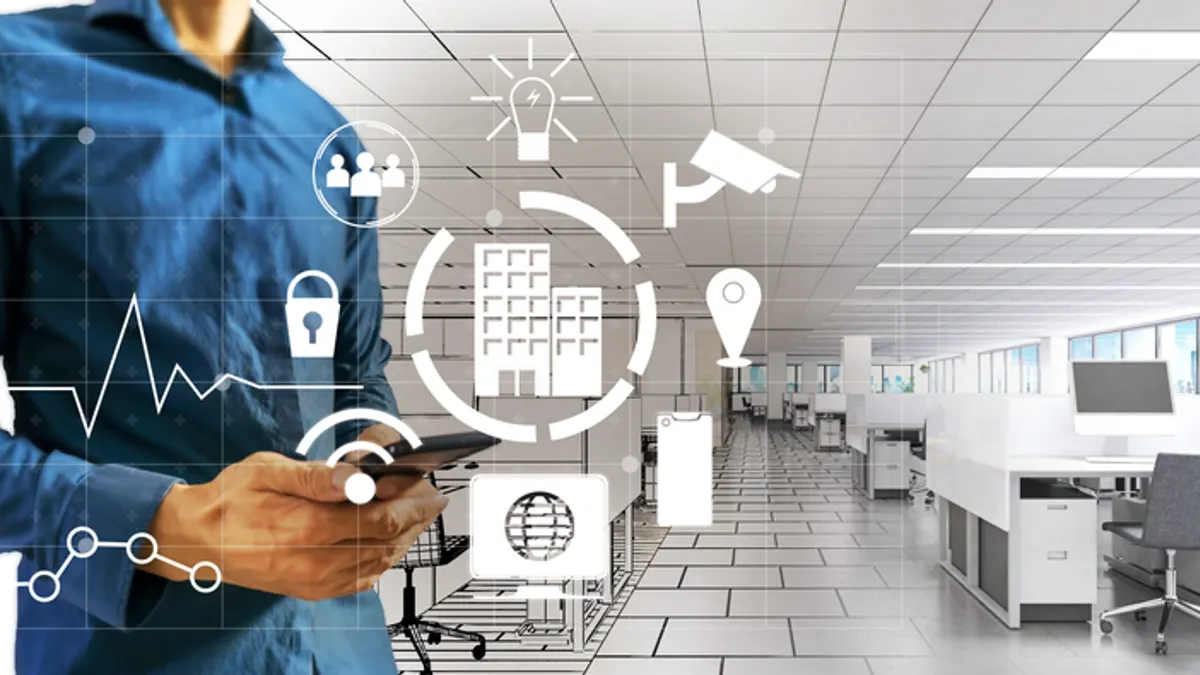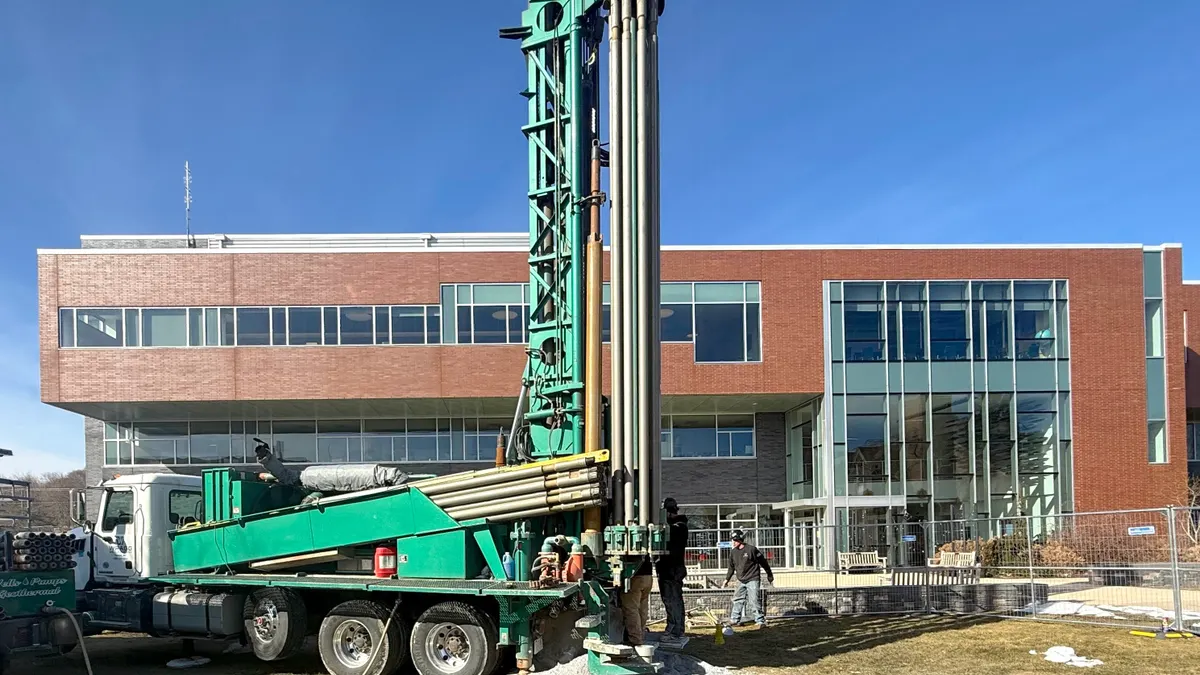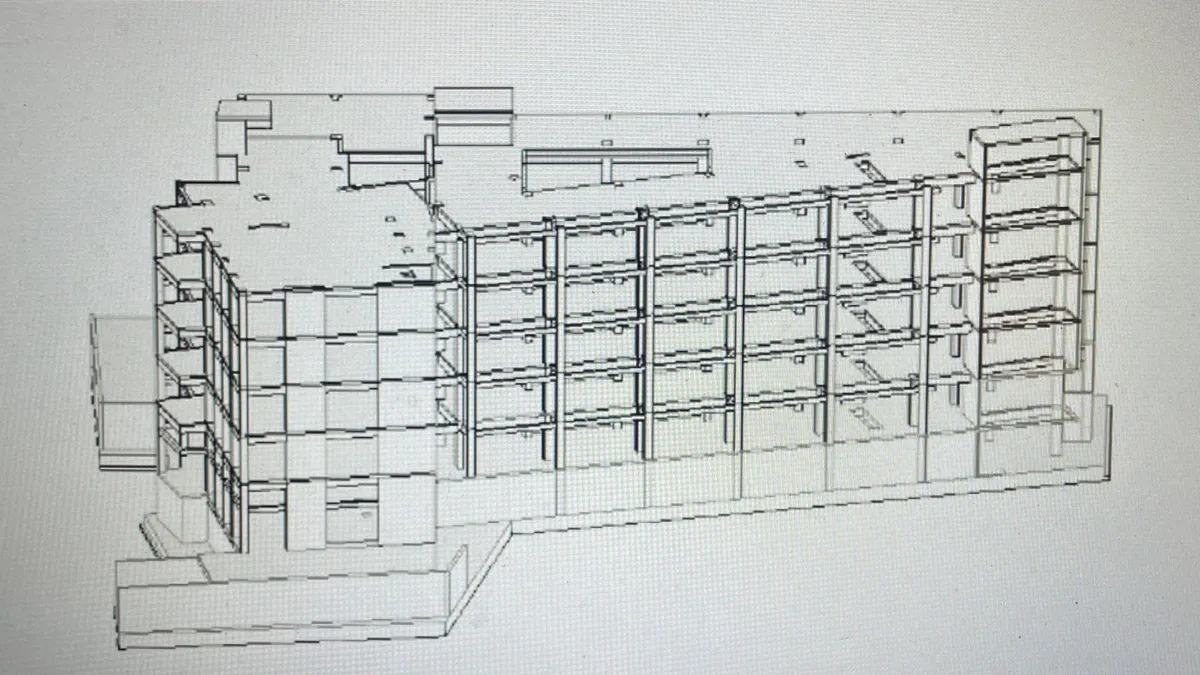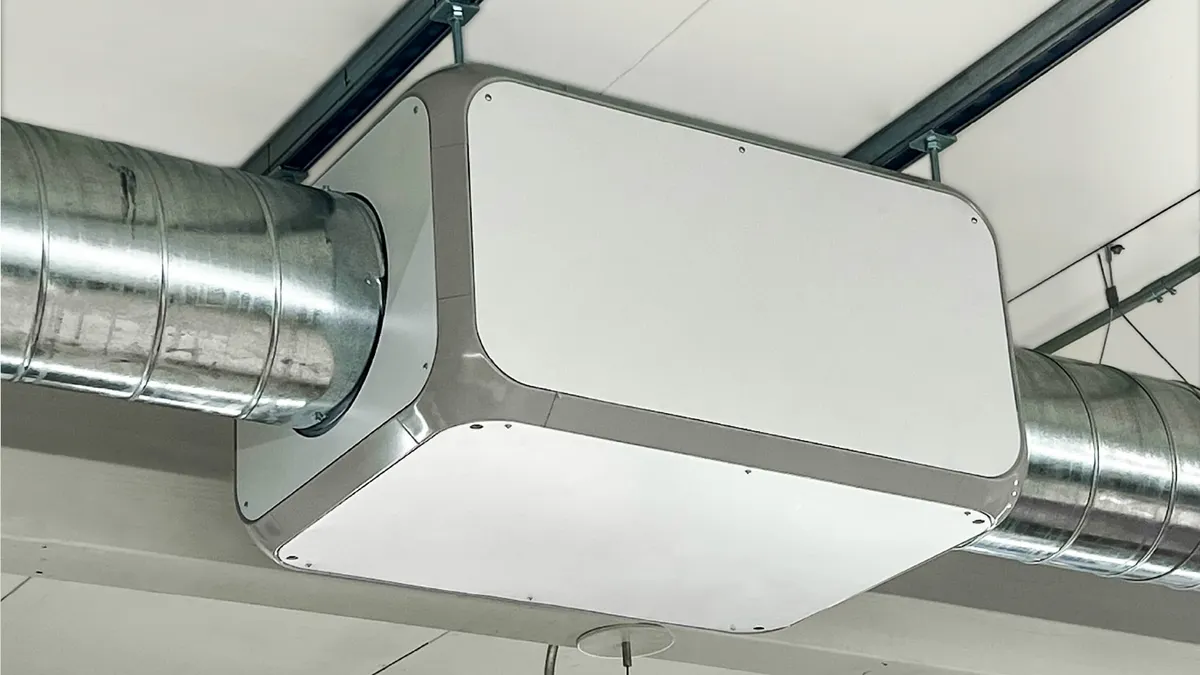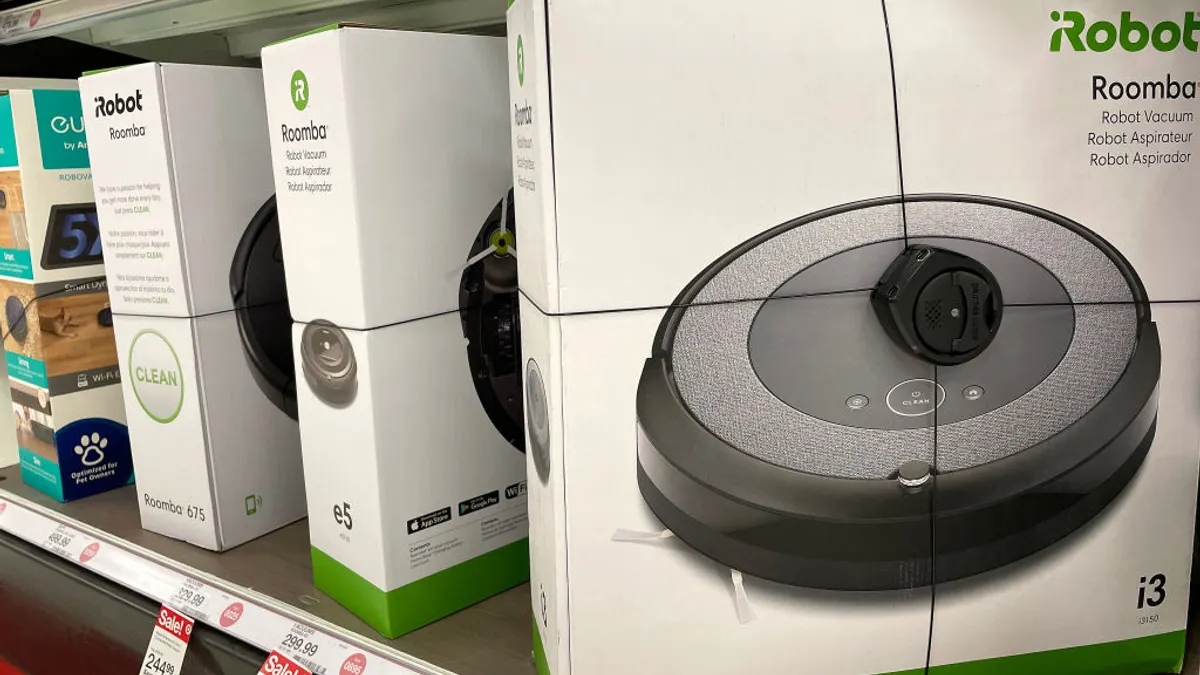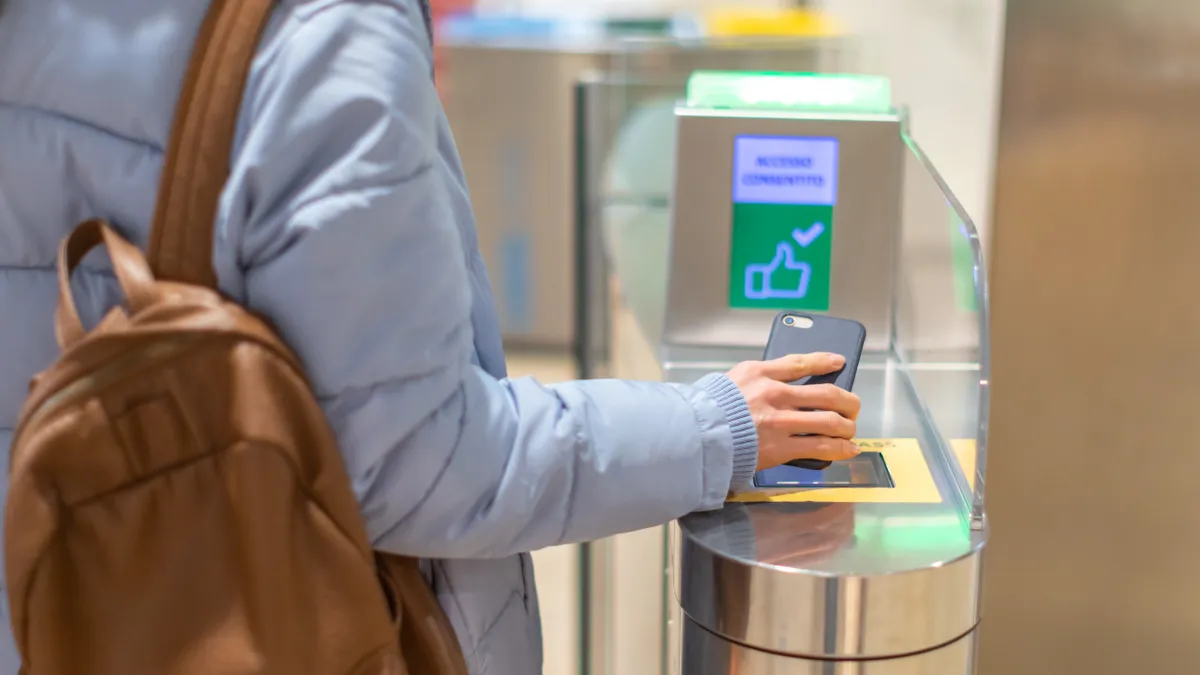As companies increasingly integrate workplace management and Internet-of-Things technologies into their building management systems and operations, facilities managers gather and analyze occupancy information and other sensor-driven data those technologies provide. In addition to providing a streamlined flow of information about occupants’ whereabouts and facilities’ operational systems, these data points inform decisions related to office dynamics for tenants and predictive maintenance. The latter has become increasingly important for facilities operators amid return-to-office mandates and a need for energy efficiency-led strategies.

One company highlighting this trend is Johnson Controls, a prominent player in building automation and control systems. It recently acquired FM:Systems from Accel-KKR for $455 million, with plans to bolster its OpenBlue platform with office dynamics and net-zero building capabilities.
Facilities Dive spoke with former FM:Systems CEO and Chairman Kurt von Koch, who joined Johnson Controls’ digital business team in a leadership role as part of the acquisition.
Editor’s note: This interview has been edited for length and clarity.
FACILITIES DIVE: Can you give us a rundown of your career at FM:Systems?
KURT VON KOCH: I joined our founder at FM:Systems [Michael Schley] back in 2006. He had pitched me on the idea of creating a software company that combined my two backgrounds: geographic information systems and enterprise resource planning software. Mike's vision was to take the second-largest cost of most organizations, which is the facilities and the buildings that their co-workers occupy, and create some software that enables them, both tabularly and visually like GIS, but pointing toward the inside of the building. To leverage workflows for the facilities teams, the real estate teams and the occupants coming into the buildings, and do that in a highly intuitive software sort of way. I loved that vision and signed up for it back in 2006.
That's what Mike and I have set out to go and build, and that's what we built. A lot of what we provide to the marketplace is about helping [building owners and operators] not only understand that second-largest cost, but also helping them harness it for great outcomes from co-workers as they come into the business. They look to collaborate and ideate with co-workers as they manage that product at the end of the day. Whether it's a service or an actual, physical, tangible thing that they're creating, [it’s about helping] them come up with and create that great outcome.
What are the biggest changes you’ve seen in the past few years?
When we take a look back [at occupancy] pre-pandemic, we were averaging about 40% of actual utilization inside of buildings. If we take a look at just the month before everyone went home on March 15, [2020], roughly, we were at 34%. So, we had already started a little bit of a dip down in February 2020. Fast forward a month, into March 2020, [and] we were at a 5% utilization of space. At that time, we thought this was the lowest it's ever going to be — 5%. We again look out globally a year later, in March 2021, and it’s 3%. We'd actually gone even lower with the new [COVID] strain that had come out. Fast forward another year, to March 2022, and we had ticked up a tiny bit at 13%. When we ran those numbers globally this past March again, we had ticked up to 25%.
Now, it's different depending on where you are across the globe. The U.S. is still hovering at around 9% to 10% of utilization, where again, pre-pandemic, it was more like 40%. Germany, much of Western Europe and the UK are hovering at around 25%-26% utilization. But, as you push into some specific countries, we're seeing India skyrocketing — a 216% increase, actually, from where they were. So, there are actually more people coming into workplaces in India. This is true in Hong Kong as well.
We're seeing some interesting things that are happening inside the workplace. One thing that's kind of stayed the same is that Tuesday, Wednesday and Thursday are still the most populated days of the week across the globe. Tuesday, Wednesday, Thursday are when people are coming into the office. People barely come in on Monday, and Friday doesn't even really count as a day. There's very small attendance there.
What I do think is super interesting is that … we're able to get pretty granular in regard to how people occupy space when they come in. If [you have] open desks, you sit down. The next day, when you come back, you're probably going to pick that same seat, right? We're seeing that happen across the board as well. Even though [people are] coming in less, they're coming in ways that are very similar. Where they arrive at 9 a.m., most people will leave around noon to one [p.m.], and then by 5 p.m., everyone's out the door. It's still a very similar sort of transaction with the space that humans are taking. It’s a very humanistic approach to the workplace.
What data have you seen increased demand for as it relates to driving operations?
There is some interesting research that Steelcase did not that long ago. They interviewed CEOs right before 2021 and 2022. And they did it again at the end of [2022] and said, “How are you thinking about occupying space?” In that lead-up to 2022, about 60% of [CEOs] came back saying, “We're going to go hybrid,” and 30% said, “We're going to be completely on-site.” Fast forward to the beginning of this year, 2023, and it's dropped dramatically — down to below 50% saying that they're going to go hybrid, and almost 50% saying that they're going to be on-site. That's how they plan.
It's also different from what actual [occupancy] looks like, but just the fact that so many CEOs were willing to say, “No, no, we believe there's power in coming together on-site.” We think about that in conversations that we have with our customers. Some customers are fully hybrid, and some are fully on-site. [For] those customers who are saying they're on-site, every single time, the two reasons that they put forward are culture and innovation.
From a culture standpoint, they want that engagement and that involvement with co-workers. Innovation is really about that instantaneous ability to ideate with fellow co-workers. What I find interesting is the conversation around productivity is not there. They recognize that their teammates are actually more productive when they provide them with not having that drive time, and they're willing to give up that productivity in order to have that culture of innovation. I find that to be super interesting.
Let’s talk about the acquisition by Johnson Controls. How did that come about, and what has that process been like?
We've been talking around the idea of really taking the abilities that we have to provide [information] to employees and visitors, the facilities teams, the space teams and real estate executives, to taking all the information and workflows that we have, but then leveraging the controls of the building, Whether it's around aligning the HVAC to the actual plan utilization, like, how many people are reserving space on this coming Wednesday and Thursday? Let's shut down floors and focus all the reservations to these specific floors instead, thereby reducing costs and driving our ability to better achieve net-zero goals. Just to be overall better stewards of our energy consumption and the effluence we put out into the world.
That's one of the things that we've been talking to customers about and talking to building management technology companies about, and it's been fantastic to come together with Johnson Controls because they're absolutely the leader in going out there and connecting buildings to the internet and connecting those controls.
Now as we come together, it really is an industry-changing moment where we're able to take all that interaction data around how occupants are planning to occupy buildings and marry that data with the ability to control the building itself. We're going to have an immediate impact around the cost to run buildings, the amount of energy consumed by buildings and consumed by large organizations, and the effects that that has on the environment and the world in general. It's amazingly awesome and industry-changing, quite frankly, what we're able to do here. That's been the lead-up to it. We see that opportunity. We know what's out there. And we've been hunting for that right partner in order to go do it.
From a facilities management and building operator perspective, what are the quickest and easiest ways to leverage occupancy data and control technology?
The first piece is absolutely the HVAC, chillers and the furnace. You think about a hospital in Houston, Texas, right now. If we're able to see that a piece of equipment is starting to wobble, if you will, and that it may break. Our ability to recognize that and automatically send a notification to our computerized maintenance management system to send a notification to the work team to get in a truck and drive out there with the right equipment to make sure that that piece of HVAC [equipment] does not go down, then that hospital does not have to evacuate those patients. They are able to keep the systems running, and that's hugely beneficial. It’s not just sustainability and energy efficiency, but it's also operational efficiency and asset optimization. And to be able to do that in a way that is intuitive and easy for the customers. It’s there right now, and we're going to be able to make that even stronger here and in the future. It's a fantastic opportunity, both in that near term, for the operational efficiency and asset optimization, but then also for that long-term sustainability and energy efficiency that will really have a global impact.
With people coming back into the office, how is space being utilized? Are there certain setups that perform better or are being used more?
One of the things that we provide is sensors that go in and help our customers understand, “Here's how you planned for occupants to use the space, but how are they actually using the space?” With that, we're able to give feedback and say, “All right, well, you’ve got five conference rooms that seat eight people, and you've got another 10 that seat 14. You need to take those that seat 14 and break them into spaces that actually seat eight.” You need to adjust the approach that you're taking.
We have a lot of customers who have gone in and really adapted floors to fit that new way of working, and [we’ve given] them insights with our sensors and planning software to help them understand, “Okay, here's what's working. Here's what people are responding to and using here. Over here are things that aren't being used.” So when [they] do a retrofit, and do the next floor, you want to make sure not to include that.
What we're also seeing is that it's really dependent from customer to customer, in that the culture they've built. Certain types of furniture systems and certain types of floor plan layouts are better-performing, and it really depends on the culture. Some furniture systems are like large phone booths. We've got customers who are deploying the exact same ones across their portfolio, and in some, they're being wonderfully utilized; in others, no one wants to touch them. … It's the culture of the organization. Sometimes it's even the culture of the department. That ability to monitor and measure has been wonderfully helpful to our customers as they build out that workplace in the future.
With so many sensors and all the different types of information flowing in, how do you manage all that data and bring it together in a way that is actually useful to users?
First of all, it's being open. Our customers will deploy our sensors, [and] they'll deploy other people's sensors. We’ll grab data from Wi-Fi access points, from badging systems. We'll grab data from all over, and then it's about intuitively representing that data back. Oftentimes, it goes back to that original vision that Mike Schley, our founder, had. Let's visualize it in a way that people recognize. Let’s visualize it on a floor plan. We've done a bunch of stuff inside of 3D. You're 3D-visualizing these things, and our customers always want to switch back. In demos, they love the 3D, but when they actually want to get their job done and work it out, they go back to 2D. Being able to visualize that [data] in a way that's intuitive, so that people can see it, recognize it, and then take action on it.
Really, it boils down to this: First of all, being open, pulling data from our sensors and from so many other places as well. But then also, visualizing that in a way that helps the customer answer it.
One of the things that we're [also] doing is … leveraging machine learning and AI to interpret this data. Then from there, we use it to predict behavior. What did we predict utilization and occupancy to look like? And now, what we'll start doing shortly, is not just predicting, but then prescribing. Based on your prior behavior, saying “Kurt always comes in when Joe and Andrea come in, but Joe and Andrea are coming in next Thursday.” How about I prompt Kurt and say, “Hey, your frequent collaborators are coming in next Thursday, would you like me to reserve a space near them?” And so being able to not only make it more of a passive, frictionless experience with the workplace, but also helping our customers drive attendance and drive people back into the workplace in ways that make sense, as opposed to just mandating that they return to the workplace.
Is there anything else that you think facilities managers should know?
I think the big-picture item is that customers, [these] large occupiers of space, are taking multiple approaches to work and return to the workplace. Some are mandating and saying, “Hey, we're coming back.” A larger portion are saying, “No, we're going to be hybrid, but we do want you in a certain number of times a week.” With that, what we're seeing is that technology is a huge enabler of either one of those approaches.
As we think about the acquisition, [we look forward to] that ability to take our space data, our occupant workflows and information and our asset maintenance data, and then combine that with Johnson Controls’ ability to manage and control the building management systems. For the HVAC, for the overall controls of the lighting of the building and all of the building assets as well as the security data. When we blend all of that together, it is a market-changing, one-of-a-kind of solution. It’s a wonderfully exciting time, quite frankly, for us as a business and for our customers. We're just so excited to go out there and fulfill on it.





